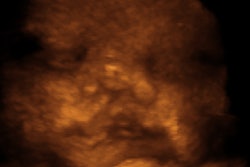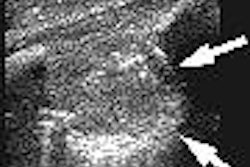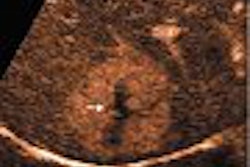British researchers say they have developed a simple and reproducible method for quantifying global left ventricular dyssynchrony, which can identify more chronic heart failure patients who may benefit from cardiac resynchronization therapy.
Researchers from King's College Hospital in London, anchored by cardiologist Dr. Mark Monaghan, published their findings in the latest journal issue from the American Heart Association (Circulation, August 16, 2005, Vol. 112:7, pp. 992-1000).
The investigators used their version of real-time 3D echocardiography (RT3DE) to examine and analyze 143 patients referred for routine echo, along with 81 healthy control subjects.
RT3DE, the authors explained, "uses the X4 matrix array transducer to obtain a pyramidal volume in real time. This second-generation matrix array transducer features 3,000 active elements sending and receiving simultaneously; images are rendered in real time."
To obtain a full-volume dataset, four smaller real-time volumes are acquired from alternate cardiac cycles and combined to provide a larger pyramidal volume of up to 90° x 90°, the authors wrote. Full-volume acquisition is performed during breath-hold and requires a relatively stable R-R interval to minimize translation artifacts.
The investigators also devised a systolic dyssynchrony index (SDI), which they convey as a percentage of the duration of the cardiac cycle to enable comparisons between patients with significantly different heart rates. A higher SDI indicates greater intraventricular dyssynchrony.
After measuring the times to isometric contraction, maximum sustained systolic velocity, minimum strain, and early and late diastolic velocities in each of the 12 nonapical left ventricular segments, SDI was calculated as the standard deviation of these timings.
"Using RT3DE, we were able to identify and quantify dyssynchrony in patients with normal LV systolic function and those with varying degrees of systolic dysfunction, a finding consonant with previous studies showing that dyssynchrony varies significantly between patients with normal and abnormal LV function," the authors wrote.
"Moreover and crucially, we were able to show highly significant differences in SDI associated with differences in LV systolic function," they continued.
"We have demonstrated that QRS duration is a poor marker of dyssynchrony because there was an increase in dyssynchrony with worsening LV systolic function, independently of QRS duration," the authors concluded. "The use of RT3DE has the potential to refine investigative and treatment strategies for patients with CHF (chronic heart failure) and to open up new options for patients refractory to optimal medical therapy."
By Tracie L. Thompson
AuntMinnie.com staff writer
August 18, 2005
Related Reading
Echo illuminates prognosis in infective endocarditis, ACS, July 15, 2005
Obesity associated with left ventricular dysfunction, with or without diabetes, July 4, 2005
Integrated 2D/3D offers workflow, clinical gains, June 17 2005
Cardiac resynchronization therapy sharply improves survival in heart failure, March 8, 2005
Toshiba expands Aplio CV applications, March 2, 2005
Copyright © 2005 AuntMinnie.com



















